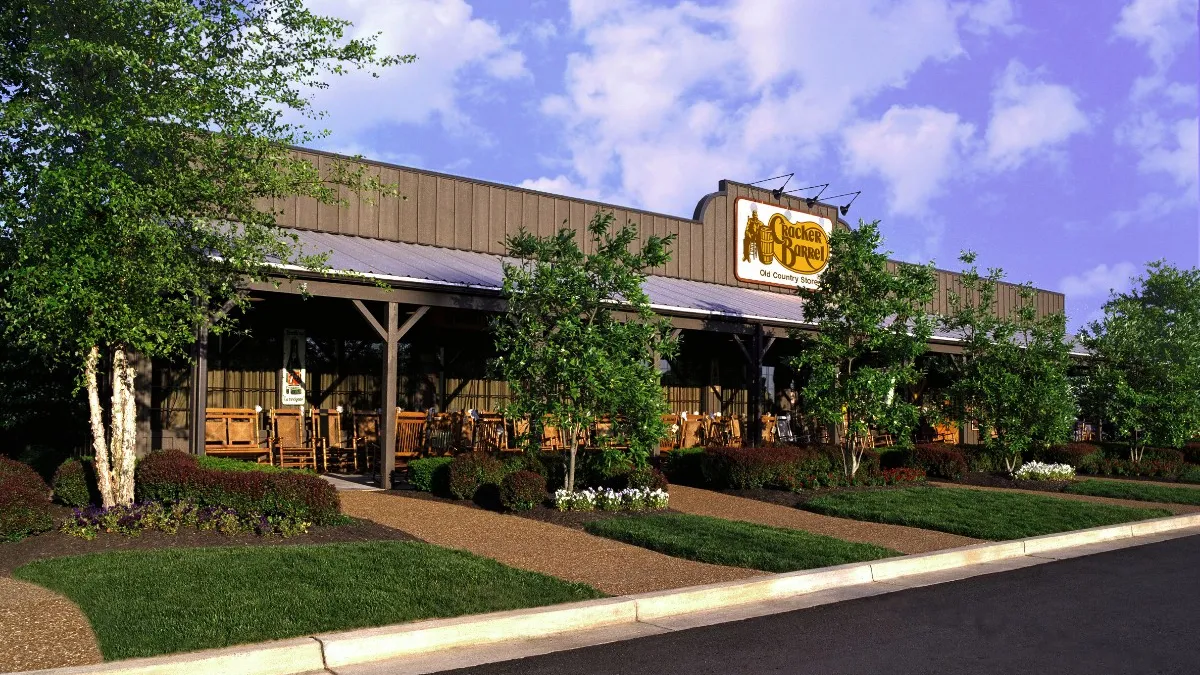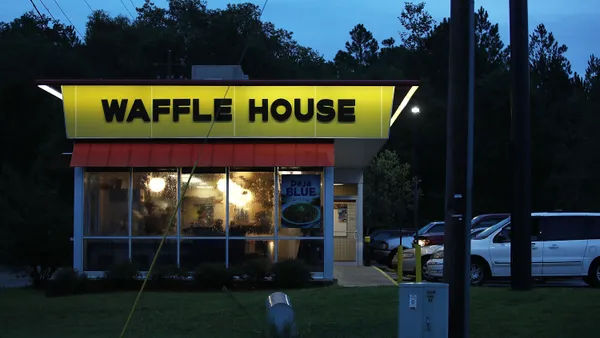Dive Brief:
- During its earnings report Tuesday, 658-unit Cracker Barrel reported a 1.4% same-store sales increase and a 3% check increase, according to a company release. However, the chain also reported a 1.6% decline in traffic.
- During the company’s earnings call, executives noted that Cracker Barrel’s off-premise growth during the quarter was in the "high teens."
- CEO Sandy Cochran said the company’s off-premise growth has led to guest satisfaction inconsistencies and increased operational pressures.
Dive Insight:
Cracker Barrel’s ambitious off-premise plans communicated during its Q3 earnings call in April may be backfiring a little — at least from a guest satisfaction standpoint. The family-dining chain launched three different off-premise strategies — delivery, "heat-and-serve" (aimed at family gatherings) and catering — even hiring 15 new catering managers, growing its catering fleet to 180 vans and creating catering-specific menu items. In other words, it’s not necessarily a cheap strategy. However, Cochran noted that off-premise business increased over 100 basis points as a percentage of sales year over year.
Increasing a focus on off-premise channels has been a strategy for many casual dining chains struggling to correct sales declines throughout the past few years. Cracker Barrel, like many casual chains, is up against oversaturation in the market, as well as intensifying competition from convenience-driven segments like fast casual.
Traffic issues are affecting the entire industry and have emerged as a major narrative during the most recent wave of earnings calls. TDn2K’s recent industry snapshot shows that comp traffic was down 2.17% in October, and 1.43% in the rolling three months.
But Cochran’s admission that guest satisfaction metrics are inconsistent has forced the company to prioritize guest experience in 2019, and perhaps for a good reason. In September, Cochran noted that "service and hospitality has always been foundational to the Cracker Barrel brand. We continue to believe that it is a differentiator and a strength, but we must do a better job in consistently delivering this experience our guests expect."
During this week’s earnings call, Cochran said Cracker Barrel will focus on staffing the restaurants to handle added volume and will focus on the host position, which was "an area that we had seen some deterioration," potentially because of the emphasis on the off-premise business.
Cracker Barrel is not unusual in experiencing a compromise in service because of added off-premise volume. As these channels continue to grow at a staggering pace — off-premise sales are expected to jump to nearly 50% of total restaurant sales by 2023 — restaurants have to have the operational and staffing pieces in place before playing in those areas. No concept would dive into catering without an appropriate catering menu/equipment or add delivery without the correct packaging and infrastructure.
Staffing, training and operations are just as important when getting into these new channels. This means companies have to think about additional makelines and employees during peak hours, for example, or designated pickup areas for delivery/carryout. Some brands — like Chick-fil-A — are even going so far as to developing their own prototypes dedicated just to off-premise business so in-restaurant service isn’t compromised.
Customers who visit casual chains tend to expect better service, since they’re paying a slightly higher ticket and they’re not seeking the speed or convenience of fast food. That poses a bigger challenge for casual chains like Cracker Barrel to find the balance between the increasingly important off-premise space and in-restaurant service.














